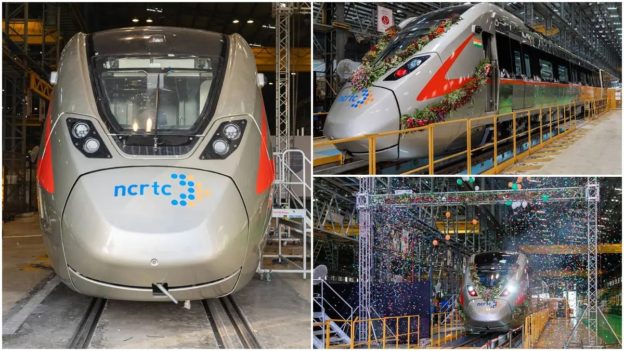RRTS upcoming corridors: The three corridors that were prioritised under phase 1 of the project were Delhi-Ghaziabad- Meerut corridor, Delhi-Gurugram-SNB- Alwar corridor, and Delhi-Panipat corridor.
Regional Rapid Transit System corridors: The National Capital Region Transport Corporation (NCRTC) has as many as eight Regional Rapid Transit System (RRTS) networks planned in NCR that will make your travel time seamless. For those who don’t know, the RRTS network has been designed to offer world-class commuter transit services which would reduce your commuting time with high-speed and high-frequency operations.
RRTS network: Speed and frequency
The RRTS trains would run at a speed of 160 kms and would ensure quality last-mile connectivity addressing the needs of all categories of travelers. This network would have a frequency of 5-10 minutes and implement a multi-modal-integration approach with railway stations, metro stations, airports, and bus depots.
RRTS Corridors: Eight stretches planned by NCRTC
The Planning Commission formed a Task Force in 2005 under the Chairmanship of Secretary, Ministry of Urban Development (MoUD) which identified 8 corridors for the implementation of this system, out of which, three corridors were prioritised under phase 1 of the project. These three are:
1. Delhi-Ghaziabad- Meerut RRTS corridor: The estimated 82 km long Delhi-Meerut Corridor would be passing through one of the most densely populated areas of the NCR connecting Delhi to Uttar Pradesh. The stretch will have 16 RRTS stations and 9 additional stations for Meerut MRTS.
2. Delhi-Gurugram-SNB- Alwar RRTS corridor: This 164 km Smart Line will make its way through industrialized areas of Haryana and Rajasthan and will benefit the entire region between Gurugram to Alwar. The corridor is expected to increase the number of passengers travelling from Delhi and Gurugram to areas in Manesar, Bawal, and Neemrana. This stretch will have 22 stations.
3. Delhi-Panipat RRTS corridor: This 103 km long corridor is aimed at connecting the national capital to towns like Sonipat, Gannaur, Samalkha and Panipat. It will have a total of 16 stations
All these three corridors will not only cut down travel time but also bring environmental and economic benefits to the entire region. All of these corridors will be converging at Sarai Kale Khan RRTS station in Delhi.
The other five corridors are:
4. Delhi – Faridabad – Ballabgarh – Palwal
5. Ghaziabad – Khurja
6. Delhi – Bahadurgarh – Rohtak
7. Ghaziabad-Hapur
8. Delhi-Shahadra-Baraut
Once the RRTS corridors are operational, there is no doubt that the improved connectivity would lead to a much greater economic activity in the NCR. Majority of energy requirements of RRTS would be met through renewable energy sources. Solar panels would also be installed across RRTS depots and station buildings. Apart form saving the cost and travel time, the RRTS network would also create more job opportunities.
https://www.financialexpress.com/infrastructure/railways/faster-than-metro-upcoming-regional-rapid-transit-system-corridors-that-will-make-commuting-in-ncr-a-cakewalk/2974239/





